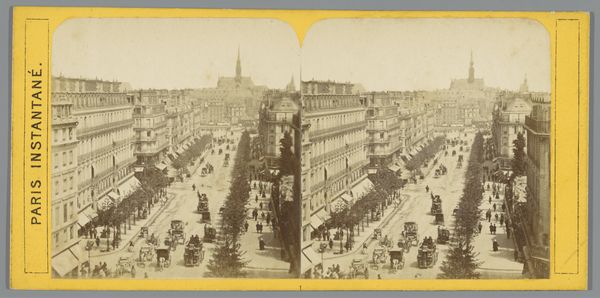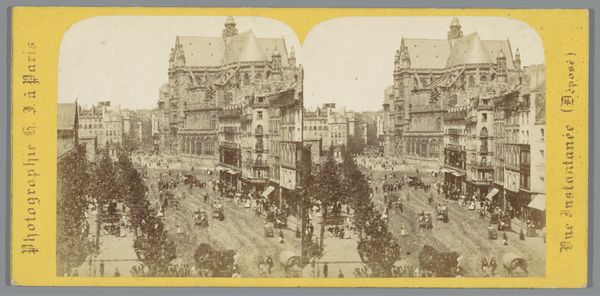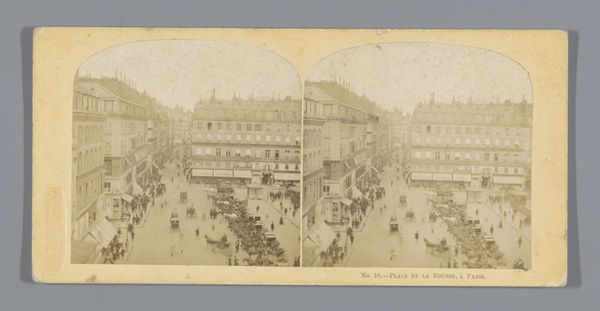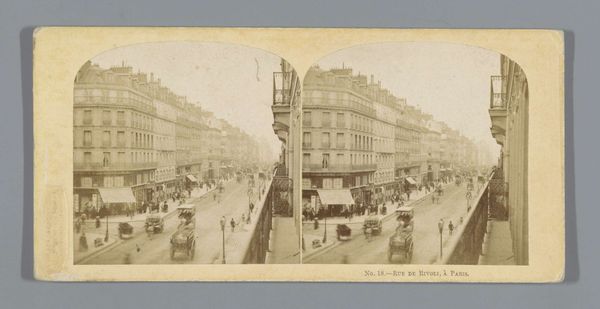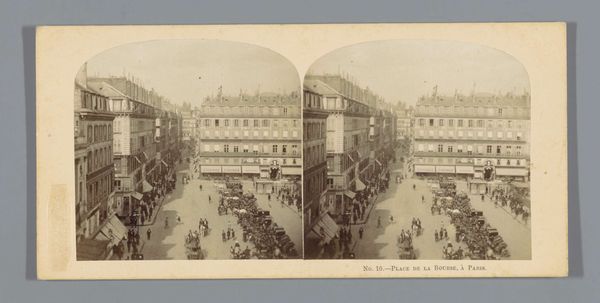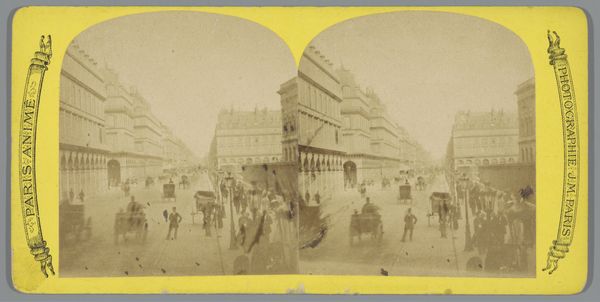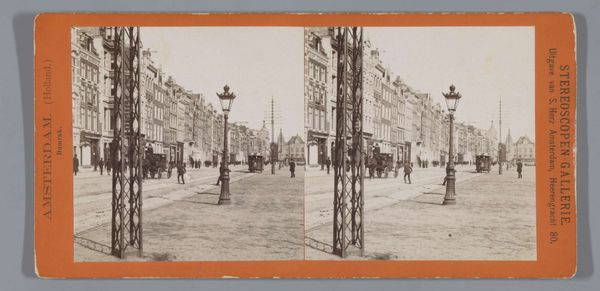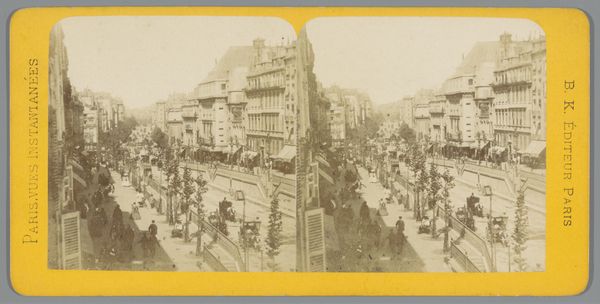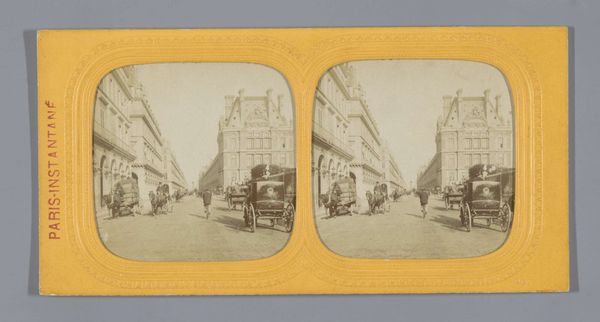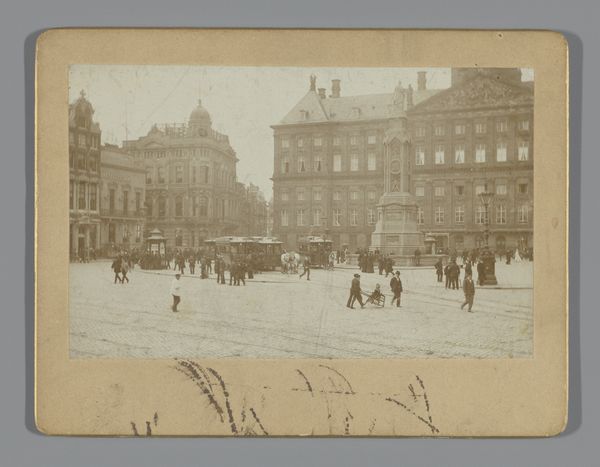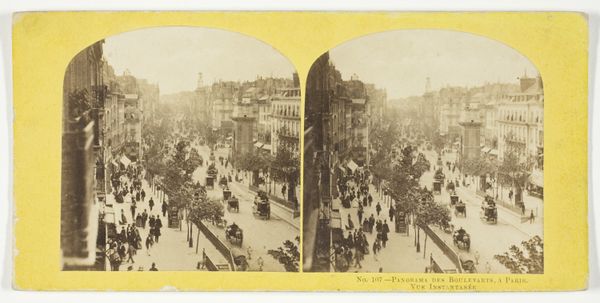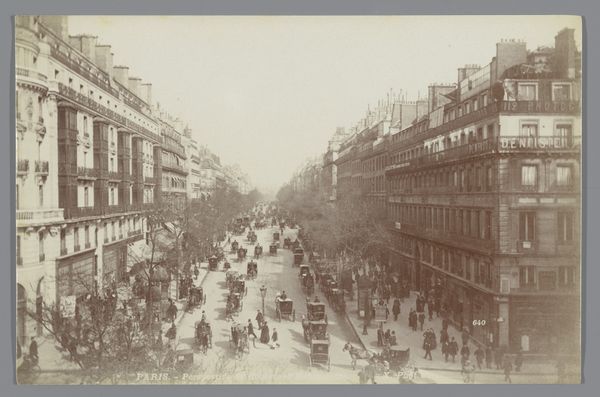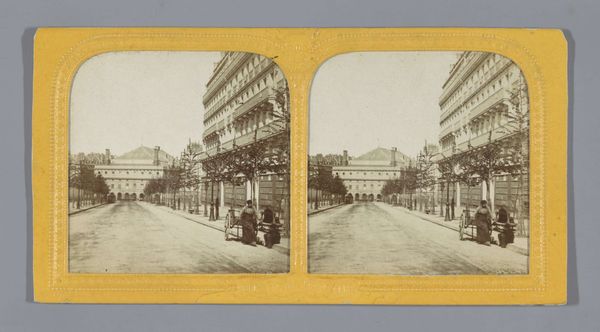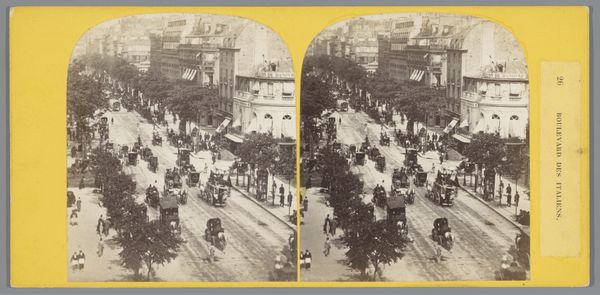
Dimensions: height 86 mm, width 177 mm
Copyright: Rijks Museum: Open Domain
Editor: This is a fascinating stereoscopic image, titled "Gezicht op Place de la Bourse in Parijs" by Hippolyte Jouvin, dating roughly between 1850 and 1880. It appears to be a photomontage, depicting a bustling Parisian street scene. What strikes me is the almost romanticized view of city life despite the industrial elements already present. What can you tell me about the societal context in which an image like this was produced? Curator: It's important to remember the rapid changes occurring in Paris during that period. Jouvin’s "Gezicht op Place de la Bourse" reflects a desire to capture and control the image of a modernizing city. The Place de la Bourse was the financial heart, so by picturing its lively activities, it presents a constructed vision of Parisian economic strength. But let’s not forget the power dynamics. Who is he showing the scene to, and how? Editor: Ah, so it's about presenting a curated vision of prosperity and modernity. I hadn't thought of the image itself as playing a political role in promoting the burgeoning financial sector. How does the Romantic style influence this depiction? Curator: The Romantic lens softens the realities of industrial growth. The image evokes a sense of nostalgia, framing a vision of controlled urban life through careful arrangement, thereby constructing a controlled social narrative. The "instantaneous view" hinted at in the margin contrasts starkly with the highly posed, curated scene we actually see. What purpose did that serve? Editor: That makes sense. The phrase "instantaneous view" almost feels ironic now, knowing it was meticulously constructed. So it seems Jouvin's image is doing more than just documenting a place. It's actually participating in shaping perceptions of Paris and its role in the wider world. Curator: Exactly! It’s crucial to think about whose vision is being promoted and how that vision aligns with the broader socio-political agendas of the time. This image is more than a snapshot; it’s a crafted statement about Parisian identity and progress. Editor: I never considered how photography itself could be so politically charged, but this really highlights the constructed nature of images and their role in shaping narratives. Thanks!
Comments
No comments
Be the first to comment and join the conversation on the ultimate creative platform.
